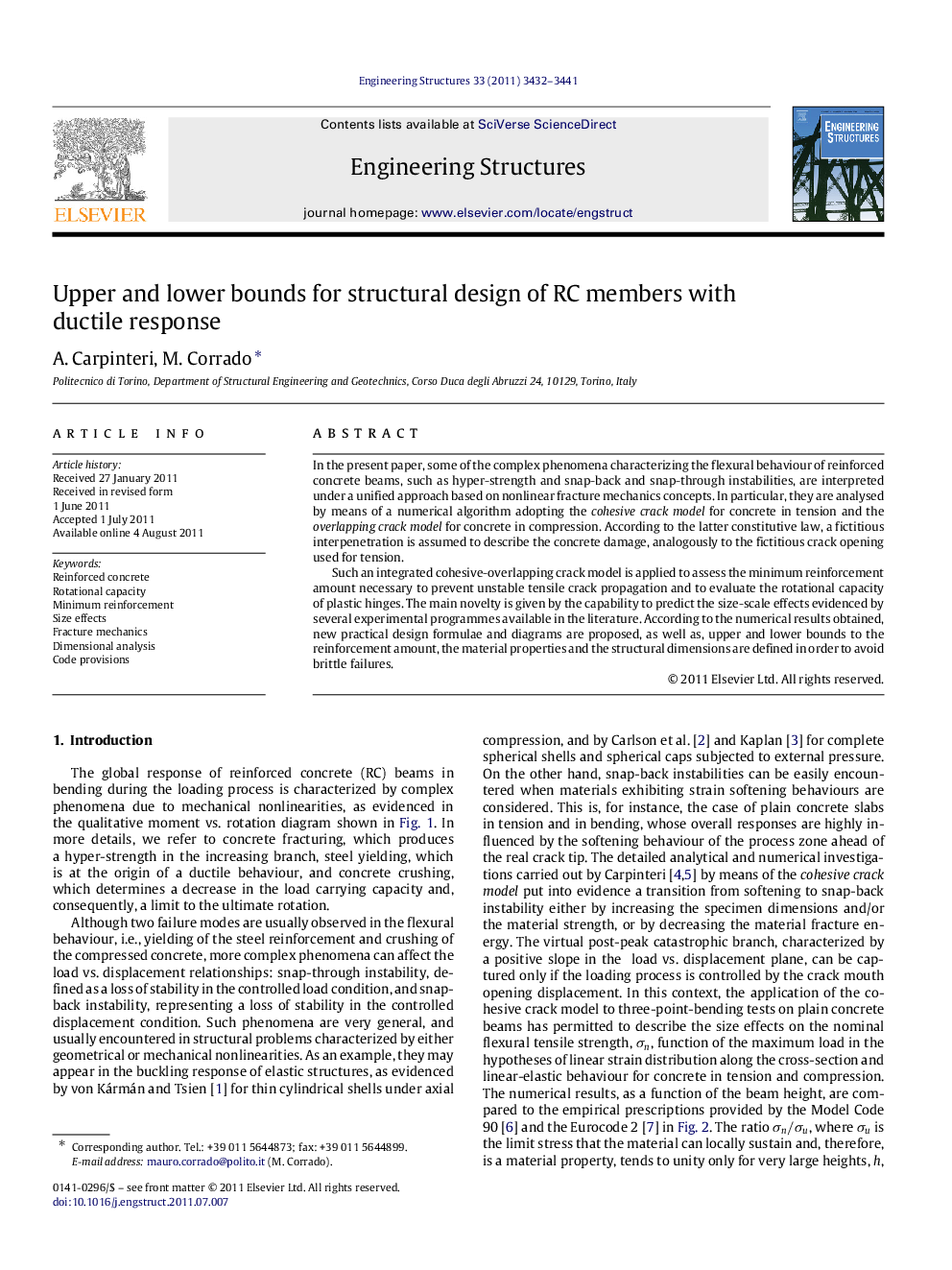| Article ID | Journal | Published Year | Pages | File Type |
|---|---|---|---|---|
| 268048 | Engineering Structures | 2011 | 10 Pages |
In the present paper, some of the complex phenomena characterizing the flexural behaviour of reinforced concrete beams, such as hyper-strength and snap-back and snap-through instabilities, are interpreted under a unified approach based on nonlinear fracture mechanics concepts. In particular, they are analysed by means of a numerical algorithm adopting the cohesive crack model for concrete in tension and the overlapping crack model for concrete in compression. According to the latter constitutive law, a fictitious interpenetration is assumed to describe the concrete damage, analogously to the fictitious crack opening used for tension.Such an integrated cohesive-overlapping crack model is applied to assess the minimum reinforcement amount necessary to prevent unstable tensile crack propagation and to evaluate the rotational capacity of plastic hinges. The main novelty is given by the capability to predict the size-scale effects evidenced by several experimental programmes available in the literature. According to the numerical results obtained, new practical design formulae and diagrams are proposed, as well as, upper and lower bounds to the reinforcement amount, the material properties and the structural dimensions are defined in order to avoid brittle failures.
► A unified approach is used to capture instabilities and nonlinearities in RC beams in bending. ► The proposed approach is based on the cohesive and the overlapping crack models. ► The minimum reinforcement amount and the plastic rotational capacity are evaluated. ► Size-scale effects are correctly described, according to experimental results. ► Upper and lower bounds to the steel reinforcement amount and the beam dimensions are defined to avoid brittle failures.
